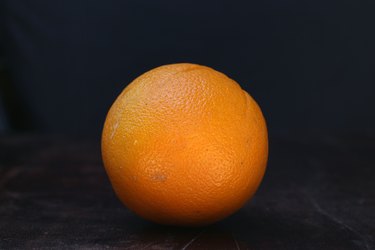
The orange fruit is a hesperidium, which is a berry with a thick rind. They were originally grown in Southeast Asia and are now grown around the world, including in the United States, Italy and Brazil. They thrive in warm weather, and differ in flavor from sweet to sour depending on their environment.
Features
Video of the Day

Orange fruits have a thick, orange-colored, outside layer called the rind. The side of the rind on the inside of the fruit is white and is called the pericarp or albedo. The orange fruit has a thin, white material attached to inside of the rind or peel that also attaches to the edible fruit flesh. This material is thread-like and is referred to as the pith. The edible flesh of the orange fruit is divided evenly into pieces, called segments or carpels.
Video of the Day
Function
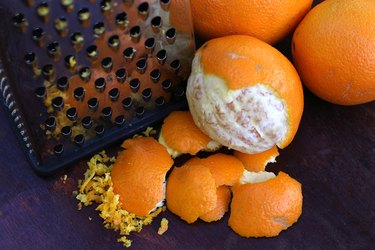
The fruit is most often peeled, so the flesh of the fruit can be eaten fresh. Its tough rind is bitter and is commonly discarded after its peeled. The rind is sometimes grated using an orange zester, which produces orange zest to be used in cooking. Besides eating the segments of the orange and creating orange juice by squeezing out juice from the carpels, a number of other products come from oranges. Marmalade is a preserve commonly made from Seville oranges. Orange peels are effective slug repellents for gardens. The peel can be pressed, producing sweet orange oil, which is used to flavor drinks and food, and is used in perfumes and oils for aromatherapy.
Types
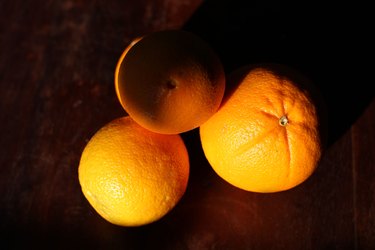
Navel oranges were first grown in Brazil, and are known for having a smaller second orange that grows at the base of each fruit (on the opposite side of the stem). The smaller second orange is implanted in the rind of the larger orange and is composed of small carpels. The smaller second orange produces a circular lump on one end of the orange that resembles a human navel. Navel oranges have no seeds. The Valencia orange is a sweet variety, used mostly for juice. Blood oranges have a rich burgundy-colored flesh. A type of blood orange is called "the scarlet navel," which has the other features of a navel orange with a smaller second orange and no seeds.
Geography
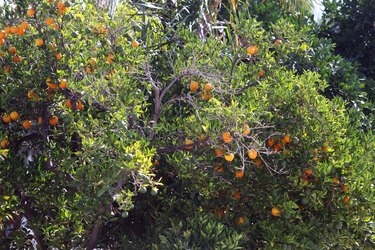
Orange fruits are grown in temperate climates around the world. The location of the orange tree will affect the taste, size, and color of the orange fruit.
Size
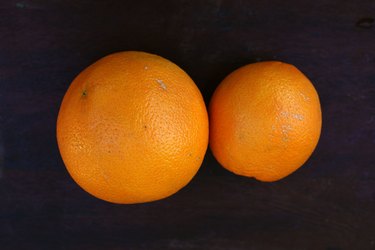
Oranges vary greatly in size, depending on where they're grown. The insides of oranges also depend on the environment of the orange tree. Persian oranges are commonly divided into ten carpels.
Benefits
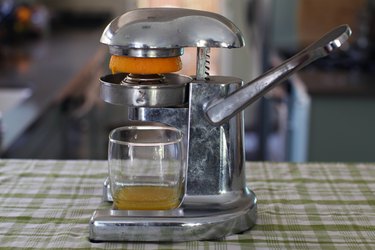
The orange fruit's flesh is fortified with vitamin C, or ascorbic acid. Vitamin C ensures the proper functioning of your body by encouraging healthy cell growth, defending the body against pollutants, and helping in tissue repair and collagen synthesis. Eating the pericarp, which includes the pith, provides you with virtually the same quantity of vitamin C as the flesh does. The pericarp is also a source of pectin, a mixture of carbohydrates that lower the risk of blood sugar swings, and can potentially lower blood cholesterol levels. Consuming oranges prevents scurvy, which is an ailment attributed to lack of vitamin C in the body.